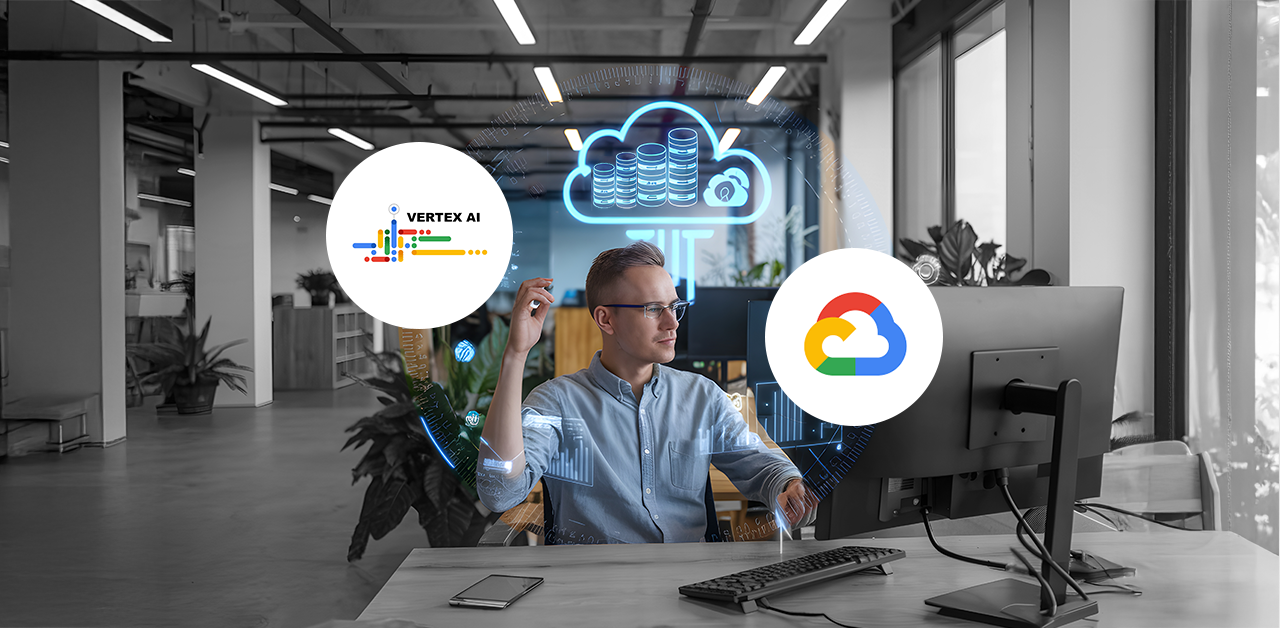Why this blog?
The shift from AutoML to Vertex AI marks a new phase in enterprise AI, one where accountability matters as much as acceleration. This blog breaks down how enterprises can unify their AI lifecycle, embrace open frameworks, and gain cost and compliance control through Vertex AI. You’ll also see how Factspan helped a healthcare client modernize 38 predictive models with measurable gains in accuracy, scalability, and transparency.
For nearly a decade, enterprises rode the AutoML wave, chasing speed, automation, and quick wins. Platforms like DataRobot democratized machine learning, enabling data teams to build faster than ever. But as AI matured from isolated experiments to enterprise infrastructure, speed alone stopped being enough.
Today, the conversation has shifted from acceleration to accountability. According to a PwC Responsible AI Survey, nearly 60% of executives say that responsible AI initiatives have improved both ROI and organizational efficiency, underscoring the growing focus on accountability over acceleration.
The world’s most data-driven organizations are demanding control, unified governance, and transparency. And for many, that journey leads to Google Cloud’s Vertex AI, the enterprise platform built not just for building models, but for building trust.
The AutoML Era Turned Speed into a Hidden Cost
AutoML solved a problem, the talent gap. It provided ready-made templates, pre-built workflows, and instant deployment. But convenience came at a cost.
Over time, black-box dependencies made retraining cumbersome. Customizations required vendor intervention. Costs ballooned across license tiers and support contracts. And as Generative AI entered the scene, most AutoML environments weren’t designed for LLM experimentation or custom architectures.
What began as acceleration eventually became technical drag. Enterprises realized that the very automation which once sped them up was now slowing innovation down.
Governance is Fueling a Next Wave of Growth
AI no longer lives in labs, it lives in regulated, audited, high-stakes environments. CIOs and CDOs aren’t asking, “How fast can we deploy models?” They’re asking, “Can we explain, trace, and govern every model decision?”
This shift has redefined what an enterprise platform must do. It must serve compliance, not just curiosity. It must integrate seamlessly with data lakes, identity access systems, and lineage tools.
Vertex AI was built for this new era. Its unified model registry, lineage tracking, and centralized permissions create an enterprise-grade control plane for ML. What used to require multiple tools and APIs is now orchestrated through one governed, cloud-native ecosystem.
How Vertex AI Rewrites the Enterprise AI Playbook

1. Unified Lifecycle
From data prep to deployment, Vertex AI offers an end-to-end environment.
- Vertex Pipelines automate training, testing, and validation
- Model Registry handles versioning, lineage, and rollback
- CI/CD integrations bring software discipline to ML, making every model trackable, testable, and auditable
2. Open by Design
Unlike proprietary AutoML environments, Vertex AI supports open frameworks like TensorFlow, PyTorch, XGBoost, and CatBoost. It naturally extends into the Generative AI era through Gemini, Codestral, and custom foundation models. The result: freedom of choice without losing orchestration or security.
3. Cost and Control
Running models adjacent to data in BigQuery minimizes latency and reduces infrastructure sprawl. Instead of exporting data between systems, everything operates under one contract, one security model, and one billing framework, predictable, scalable, and sustainable
Going from Speed to Strategy with Platform Intelligence
The shift to Vertex AI isn’t just technical, it’s architectural.
Enterprises are consolidating fragmented AI stacks into unified platforms. When data, analytics, and ML coexist in a single governed environment, innovation scales without chaos.
Vertex AI delivers that convergence, a platform where predictive ML, MLOps, and Generative AI coexist under one operational model.
For leadership, it means fewer vendors, cleaner governance, and stronger compliance posture.
For data science teams, it means autonomy with accountability i.e., open code, portable models, and deep integration with GCP’s analytics stack.
Migration in Motion toward Real Transformation
Migrating from AutoML to Vertex AI isn’t a single leap, it’s a phased evolution.

1. Inventory & Parity: Rebuild existing models using open algorithms to match baseline performance.
2. Pipeline Automation:Integrate training, testing, and deployment through Vertex Pipelines for repeatability and scale..
Factspan followed this in a recent healthcare engagement, modernizing 38 predictive models from DataRobot to Vertex AI across payment forecasting, appointment management, and emergency department volume planning. Once rebuilt with open frameworks like XGBoost, CatBoost, Prophet, ARIMA, and SARIMA, over half the models outperformed their original benchmarks, while achieving 100% migration success.
The impact went beyond accuracy: retraining time dropped by 40%, vendor lock-in was eliminated, and the client gained a fully audit-ready, transparent ecosystem built entirely on GCP.
The Calculated Risk & Payoff
Migration friction is real – retraining drift, data versioning, and user adaptation are inevitable. But the risk of staying static is greater. Enterprises that cling to proprietary silos will struggle to integrate GenAI, enforce compliance, or scale efficiently.
The lesson: discomfort is a feature of digital maturity. Those who embrace platform migration now are buying freedom for the next decade of AI innovation.
Vertex AI: The Operating System for Enterprise Intelligence
AI is no longer a playground of experiments, it’s the power grid of enterprise intelligence.The winners won’t be those who automate fastest, but those who govern deepest.
Vertex AI isn’t the next AutoML tool, it’s the operating system for data-driven decision-making, where every model, metric, and machine learning pipeline speaks a common language of trust, transparency, and scale.
Factspan – Powering the Shift to Open and Explainable AI
At Factspan, we help enterprises move beyond black-box automation into transparent, cloud-native AI ecosystems.
Our DataRobot-to-Vertex AI modernization framework has been battle-tested across multiple industries, starting with healthcare, where we achieved full migration success across 38 models while improving accuracy, scalability, and governance.
By combining open-source algorithmic redevelopment, containerized deployment, and end-to-end automation on Vertex Pipelines, Factspan enables organizations to future-proof their AI infrastructure for both predictive and generative workloads.
For leaders seeking control, compliance, and continuous innovation, this is where platform thinking begins.
You want to know how we did it? Explore the full case study: Modernizing DataRobot Models on Google Cloud Vertex AI
Ready to modernize your AI stack with Vertex AI?

